Principles of Energy Conversion
Energy is neither created nor destroyed! It is simply changed in form
Electric generators and motors are electromechanical energy converters
An electromechanical energy converter converts energy from electrical to mechanical and vice versa. However, it also converts a small amount of energy to heat in different types of losses: copper, iron and mechanical. This is an unwanted result that is required to be minimized at the design stage

Motor is made when converting electrical energy into mechanical
While a generator is when Mechanical energy is converted to electrical
Torque and Force Relationship
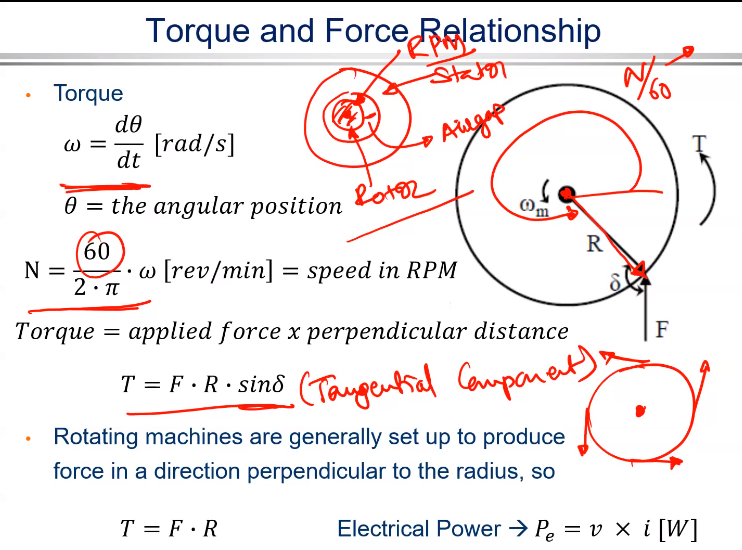
So generally torque is T = F*R
and electrical power is v *i[W] (Single phase power)
Recalling Faraday
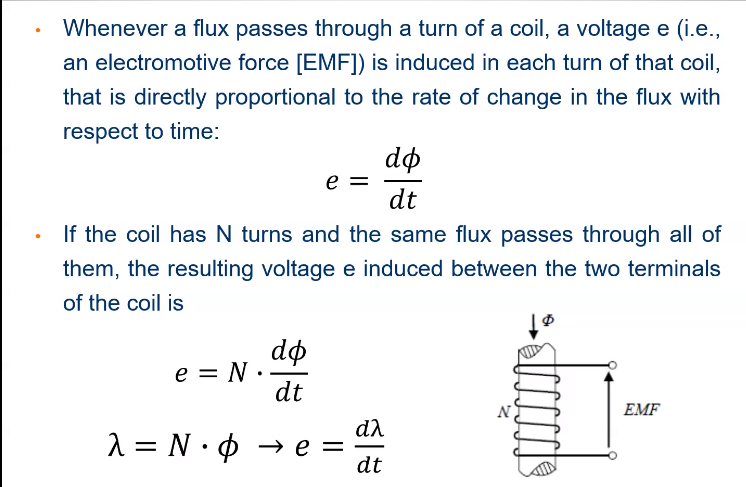
Electromechanical Energy Conversion
In figure below there is 2 images:
One where there is no current and on the right you can see a field with current going in direction out of the paper
like this:
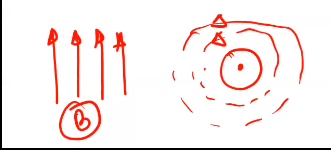
At point A the flux of magnetic field opposes flux generated by wire as they are in opposite directions while at point B , magnetic flux of field supports the magnetic flux generated by the wire.
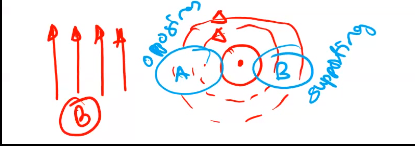
Which is why there is less flux on A side than b in main picture
Now the force that the conductor experiences is known as Lorentz force

Lorentz Force:The force experienced by a charged particle moving in an electromagnetic field. It is perpendicular to both the particle's velocity and the magnetic field, and can be calculated using the equation F = q(v x B), where F is the Lorentz force, q is the charge of the particle, v is its velocity, and B is the magnetic field.

To create a force you need to fields to interact and create and output force
Example Force on a Conductor
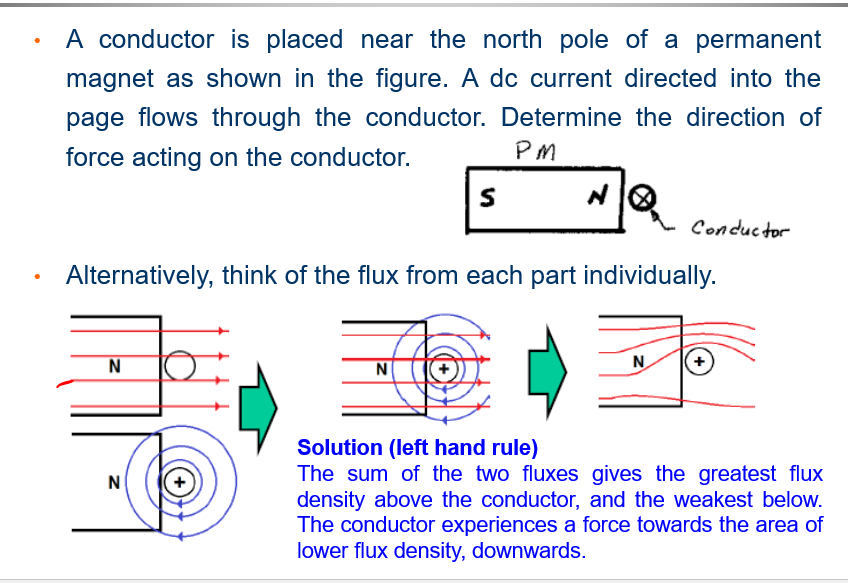
Induced Voltage on a Conductor
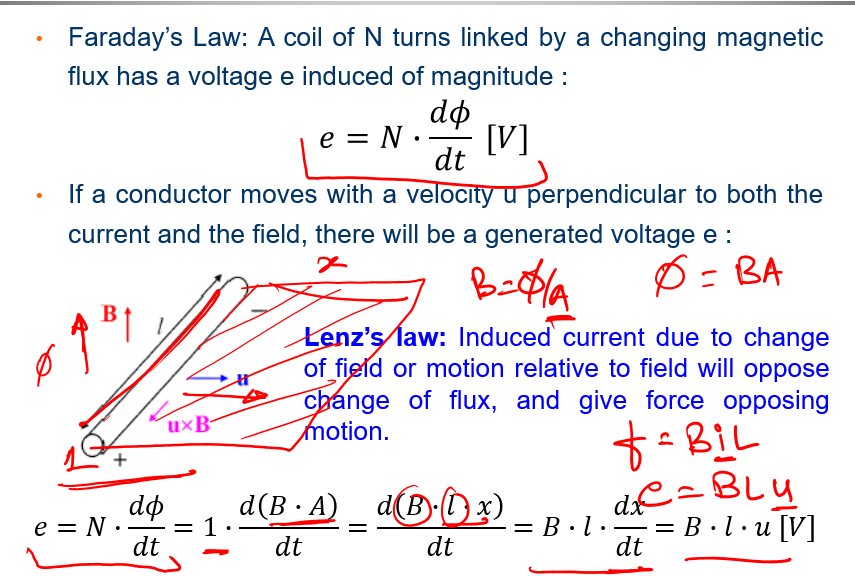
where u is velocity
Generation of Force and Voltage
Using Fleming’s left hand rule:
Fundamental concept of Electrical machine
The majority of electrical machines(motors and generators) are based on the Lorentz force —> This is demonstrated below with a single turn coil carrying electrical current rotates in a magnetic field between two poles of a magnet
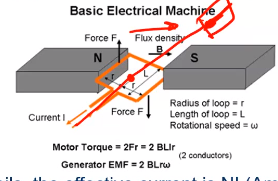

Phase connections
Principle of Electrical machines
In order to have the energy conversion (i.e. electrical machine to work) there will be a need of two fields one on stator and another on rotor which will interact and create conversion of mechanical to electrical and electrical to mechanical.
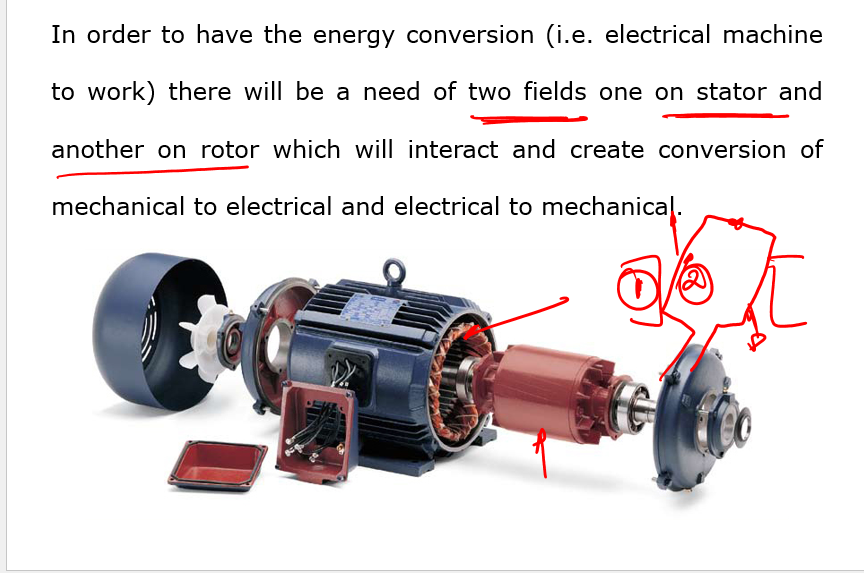
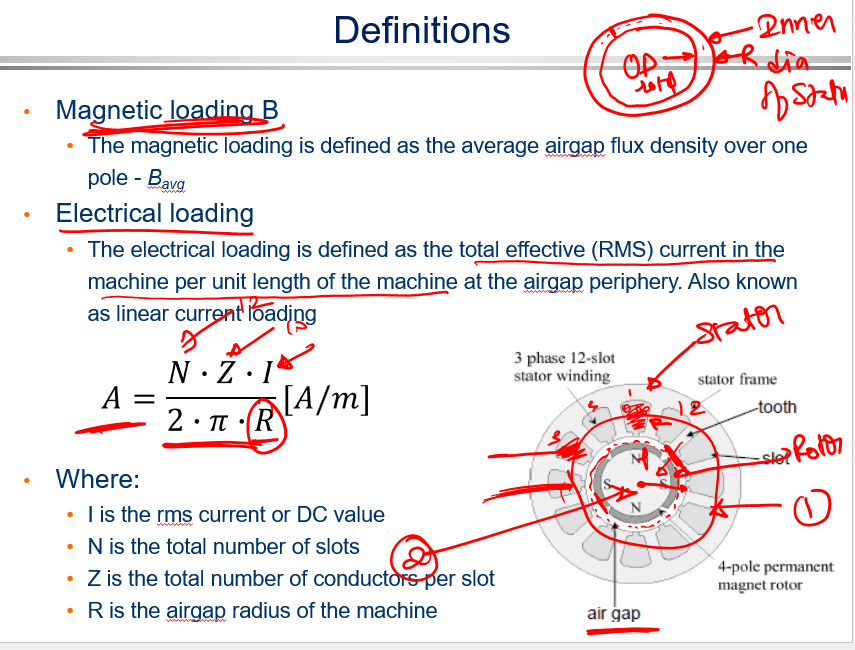
F = BIL in this equation there are two fields the magnetic load and Electric load
Magnetic loading: is defined as the average air gap flux density over one pole B - avg
Electrical loading: is defined as the total effective RMS current in the machine per unit length of the machine at the air gap periphery. Also known as linear current loading

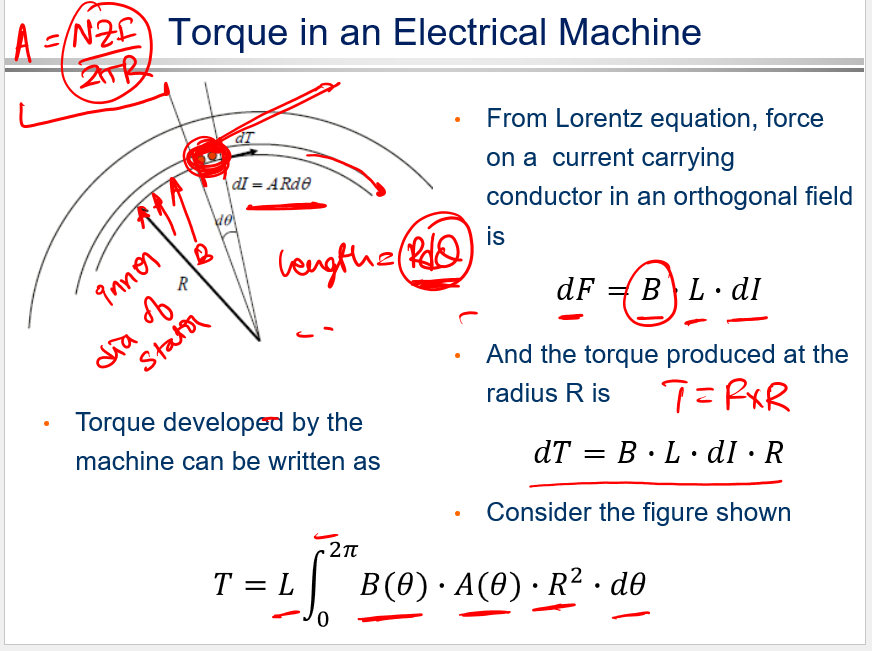
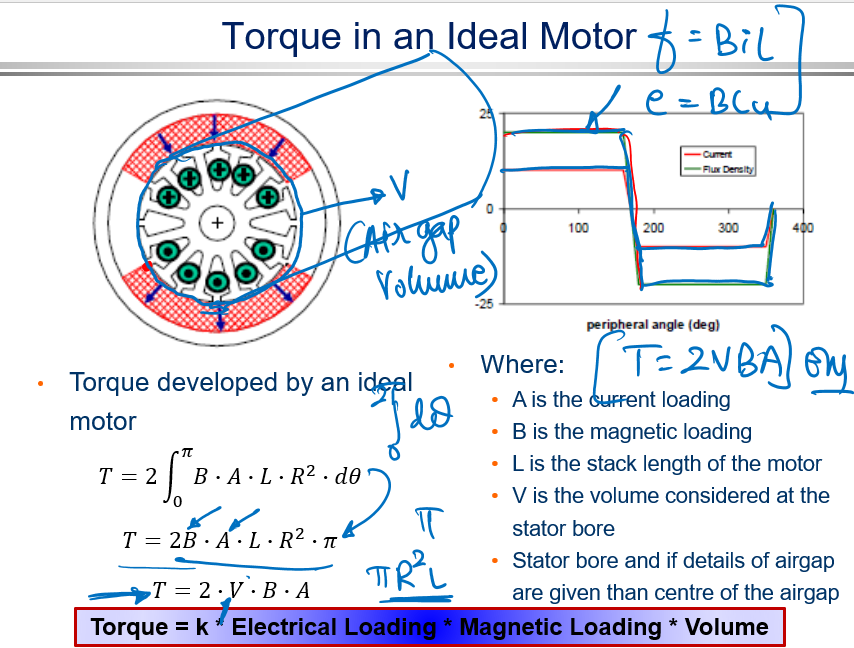
So Torque = k Electrical loading Magnetic loading * Volume
Example
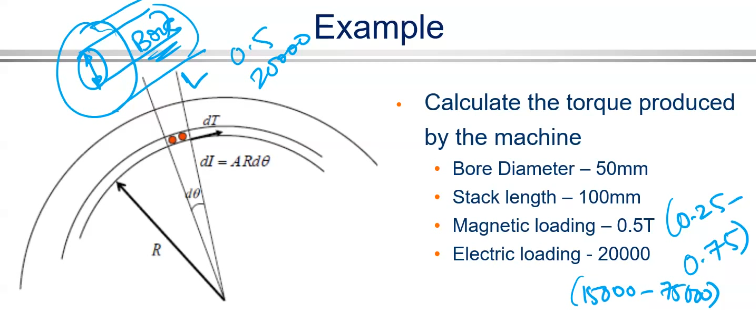
Example 2
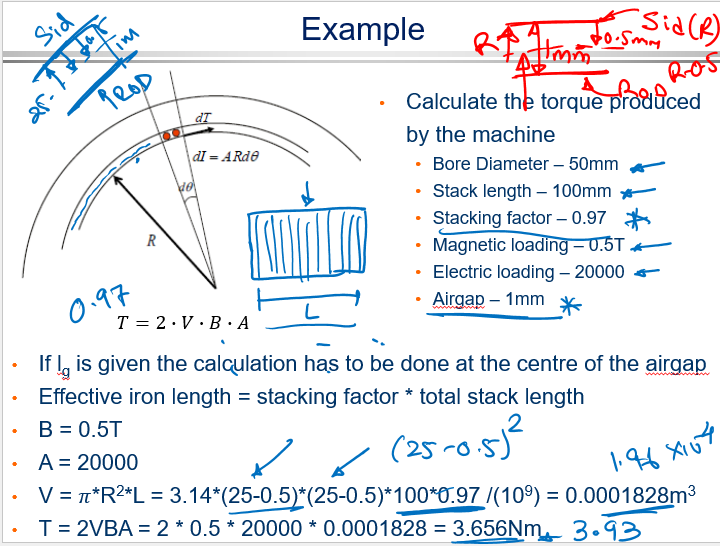
Volume decreased so torque decreased